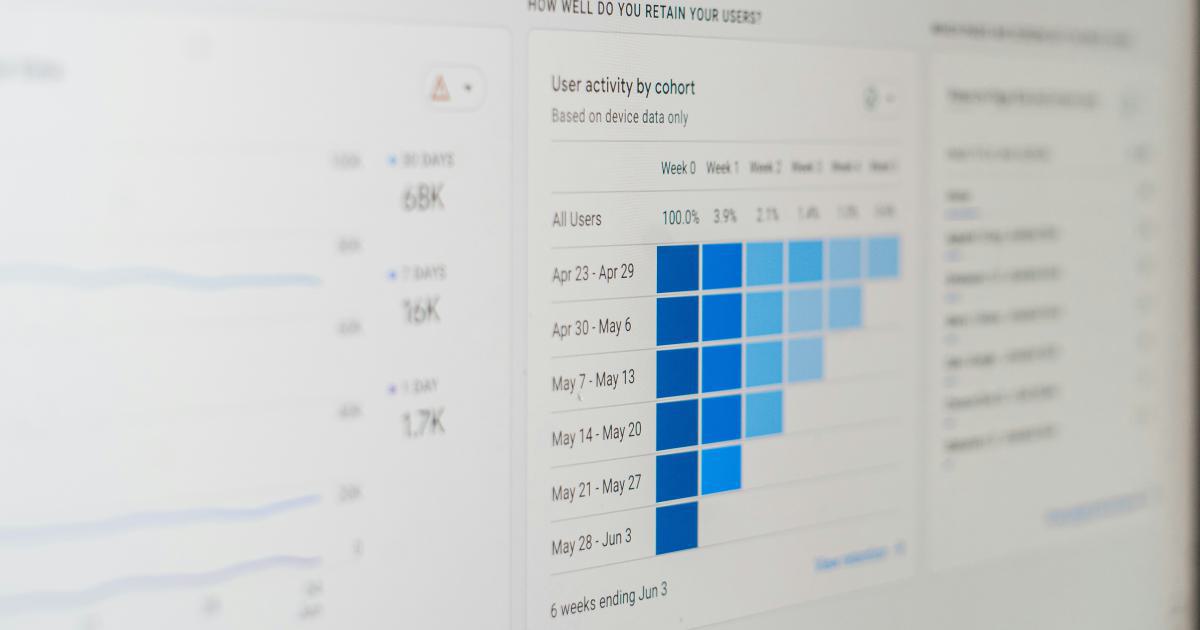Unleashing the Power of Event Structured Data


Understanding the Importance of Event Structured Data
In the digital age, data has become the lifeblood of businesses, fueling decision-making, optimization, and innovation. Among the various types of data, event structured data has emerged as a powerful tool for organizations seeking to unlock valuable insights and drive strategic initiatives. Event structured data, also known as event data or event-based data, is a specific form of data that captures and organizes information about significant occurrences or actions within a system or organization.

Unlike traditional structured data, which typically consists of static information stored in rows and columns, event structured data focuses on the dynamic, time-based events that shape an organization's operations and activities. This data can encompass a wide range of information, including user interactions, system events, transactional records, and more. By capturing and analyzing this data, businesses can gain a deeper understanding of their processes, identify trends and patterns, and make informed decisions that drive growth and efficiency.
One of the key advantages of event structured data is its ability to provide real-time insights. Unlike batch-processed data, event data is collected and processed in near-real-time, allowing organizations to respond quickly to changing conditions and customer needs. This agility can be crucial in today's fast-paced business environment, where the ability to adapt and make timely decisions can mean the difference between success and failure.
The Rise of Event Driven Architecture
The increasing importance of event structured data has also led to the emergence of event-driven architecture (EDA), a software design paradigm that emphasizes the production, detection, consumption, and reaction to events. In an event-driven architecture, components of a system communicate with each other by producing and reacting to events, rather than relying on traditional request-response mechanisms.

This approach offers several benefits, including improved scalability, flexibility, and responsiveness. By decoupling the various components of a system, event-driven architecture allows for more modular and loosely coupled designs, which can be more easily adapted to changing requirements or unexpected events. Additionally, the real-time nature of event data can enable faster decision-making and more effective event-based triggering of automated processes or notifications.
Leveraging Event Structured Data for Business Insights
The power of event structured data lies in its ability to provide organizations with a wealth of valuable insights that can drive strategic decision-making and operational improvements. Here are some of the key ways in which businesses can leverage this data:
Customer Behavior Analysis
Event structured data can offer deep insights into customer behavior, enabling organizations to better understand how their customers interact with their products, services, and digital platforms. By tracking user actions, such as page views, clicks, purchases, and abandoned carts, businesses can identify patterns, trends, and pain points that can inform product development, marketing strategies, and customer engagement initiatives.

For example, an e-commerce company can use event data to track the customer journey, identify the most effective marketing channels, and optimize the user experience to reduce shopping cart abandonment. This information can then be used to personalize the customer experience, target marketing campaigns, and make data-driven decisions that enhance customer satisfaction and loyalty.
Operational Efficiency Improvements
Event structured data can also provide valuable insights into a business's internal operations, enabling organizations to identify bottlenecks, optimize workflows, and improve overall efficiency. By tracking and analyzing events related to production, logistics, IT systems, and other critical business processes, companies can pinpoint areas for improvement, automate manual tasks, and make informed decisions that streamline operations.

For instance, a manufacturing company can use event data to monitor the performance of its production line, identify delays or quality issues, and make adjustments to improve throughput and reduce waste. Similarly, a financial institution can leverage event data to detect and prevent fraud, optimize transaction processing, and enhance regulatory compliance.
Risk Mitigation and Compliance
Event structured data can play a crucial role in mitigating business risks and ensuring regulatory compliance. By tracking and analyzing events related to security threats, system failures, and compliance breaches, organizations can proactively identify and address potential issues before they escalate.

For example, a healthcare organization can use event data to monitor patient records, identify suspicious activities, and ensure compliance with data privacy regulations, such as HIPAA. Similarly, a financial services firm can leverage event data to detect and prevent fraudulent transactions, comply with anti-money laundering (AML) and know-your-customer (KYC) regulations, and mitigate the risk of costly penalties or reputational damage.
Predictive Analytics and Forecasting
Event structured data can also be leveraged for predictive analytics and forecasting, enabling organizations to anticipate future trends, identify emerging opportunities, and make proactive, data-driven decisions. By analyzing patterns and correlations within event data, businesses can develop predictive models that can forecast customer demand, anticipate equipment failures, or identify potential areas of growth.

For instance, a retail company can use event data to forecast seasonal sales patterns, optimize inventory levels, and plan marketing campaigns that align with customer demand. A logistics company can leverage event data to predict route delays, proactively reroute deliveries, and improve overall supply chain efficiency.
Overcoming the Challenges of Event Structured Data
While the benefits of event structured data are significant, organizations often face several challenges in effectively leveraging this valuable resource. These challenges include:
Data Volume and Velocity
One of the primary challenges associated with event structured data is the sheer volume and velocity of the data being generated. As businesses continue to digitize their operations and customer interactions, the amount of event data being produced can quickly become overwhelming, requiring robust data management and processing capabilities.

To address this challenge, organizations must invest in scalable data storage and processing solutions, such as big data technologies, cloud-based platforms, and event streaming platforms. These tools can help businesses manage the high-volume, high-velocity nature of event data, enabling them to ingest, process, and analyze the information in near-real-time.
Data Complexity and Diversity
Event structured data can be highly complex and diverse, encompassing a wide range of event types, data formats, and data sources. This complexity can make it challenging to integrate, normalize, and analyze the data in a meaningful way.

To overcome this challenge, organizations must invest in data integration and normalization strategies, leveraging tools and techniques such as data pipelines, extract-transform-load (ETL) processes, and schema management. By establishing a unified and consistent data model, businesses can more effectively analyze and derive insights from their event structured data.
Scalability and Performance
As the volume and complexity of event structured data continue to grow, organizations must ensure that their data processing and analytics capabilities can scale to meet the increasing demands. Failure to do so can result in performance issues, delayed insights, and missed opportunities.

To address this challenge, businesses should explore scalable, high-performance data processing and analytics solutions, such as distributed computing frameworks, in-memory databases, and event streaming platforms. These technologies can help organizations handle the growing demands of event structured data while maintaining the speed and responsiveness required for effective decision-making.
Governance and Security
Managing the security and governance of event structured data is another critical challenge that organizations must address. With sensitive customer information, operational details, and mission-critical data contained within event data, it is essential to ensure proper data access controls, compliance with regulations, and data privacy safeguards.

To mitigate these challenges, businesses should implement robust data governance frameworks, including data policies, access controls, and data lineage tracking. Additionally, they should leverage security measures such as encryption, access logging, and event-based anomaly detection to protect their event structured data from unauthorized access or misuse.
Implementing Successful Event Structured Data Strategies
Overcoming the challenges of event structured data and harnessing its full potential requires a well-designed and executed strategy. Here are the key steps organizations should consider when implementing a successful event structured data initiative:
1. Establish a Clear Vision and Objectives
The first step in implementing a successful event structured data strategy is to define a clear vision and set of objectives. Organizations should align their event data initiatives with their overall business goals, identifying the specific challenges or opportunities they aim to address through the use of event data.
2. Conduct a Data Audit and Inventory
Before diving into event data analytics, it is essential to conduct a comprehensive audit and inventory of the existing event data sources within the organization. This process should include identifying the various data formats, data quality, and data integration requirements, as well as any existing data management or processing capabilities.

3. Develop a Scalable Data Architecture
Based on the findings from the data audit and inventory, organizations should design a scalable data architecture that can effectively manage the volume, velocity, and variety of their event structured data. This may involve deploying a combination of data storage, processing, and analytics technologies, such as data lakes, stream processing engines, and real-time analytics platforms.

4. Implement Robust Data Governance and Security
Alongside the technical infrastructure, organizations must establish a comprehensive data governance and security framework to ensure the proper management, protection, and compliance of their event structured data. This may include developing data policies, implementing access controls, and implementing security measures such as encryption and anomaly detection.

5. Empower Users with Intuitive Analytics and Visualization
To ensure that the event structured data is effectively leveraged across the organization, businesses should invest in user-friendly analytics and visualization tools. These tools should enable business users, data analysts, and decision-makers to easily access, explore, and derive insights from the event data, without requiring deep technical expertise.

6. Foster a Data-Driven Culture
Ultimately, the success of an event structured data initiative depends on the organization's ability to foster a data-driven culture. This involves providing training and support to employees, encouraging data-driven decision-making, and demonstrating the tangible business impact of leveraging event data.

By following these key steps, organizations can develop and implement a comprehensive event structured data strategy that unlocks the full potential of this valuable data resource, driving business growth, operational efficiency, and competitive advantage.
Conclusion
Event structured data has emerged as a powerful tool for organizations seeking to gain deeper insights, optimize their operations, and make more informed, data-driven decisions. By capturing and analyzing the dynamic, time-based events that shape business activities, companies can uncover valuable insights, anticipate future trends, and respond more effectively to changing market conditions.
However, effectively leveraging event structured data is not without its challenges. Organizations must address issues related to data volume, velocity, complexity, and security, as well as ensure that their data processing and analytics capabilities can scale to meet the growing demands of this rich data source.
By establishing a clear vision, developing a scalable data architecture, implementing robust data governance and security, and fostering a data-driven culture, businesses can unlock the true power of event structured data and position themselves for long-term success in the digital age.